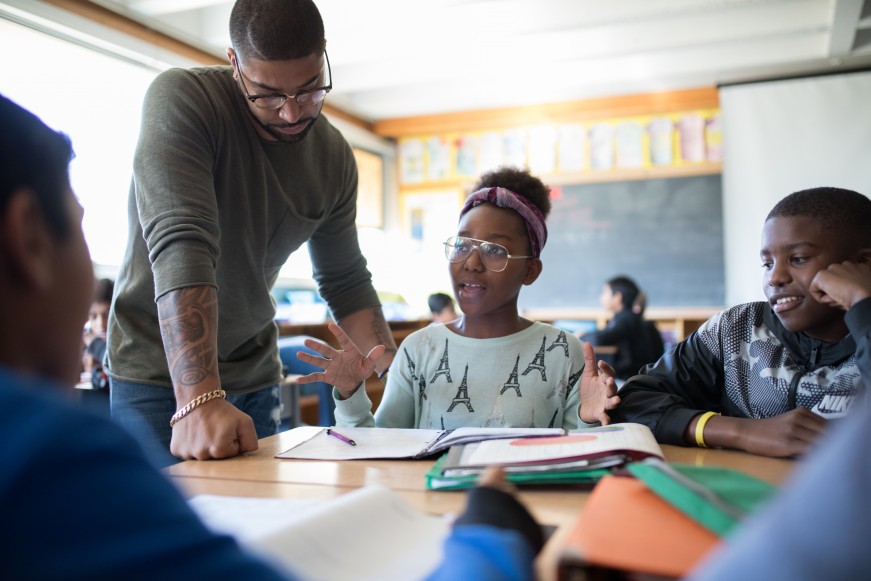
Abstract:
Educationally disadvantaged students face a myriad of challenges in their academic lives that make it difficult for them to acquire advanced skills. These challenges range from lack of resources, limited access to quality education, low socio-economic status, and inadequate teachers. To bridge the gap between educationally disadvantaged students and their advantaged counterparts, it is necessary to provide them with the necessary skills to succeed. This article explores the challenges facing educationally disadvantaged students and presents effective strategies for teaching advanced skills to these students. These strategies include personalized learning, culturally responsive teaching, project-based learning, and technology integration. The article also highlights the role of teacher training and the need for collaboration between stakeholders in improving the academic outcomes of educationally disadvantaged students.
Introduction:
Educationally disadvantaged students are individuals who experience limited opportunities to access quality education due to a range of social and economic factors. These students are more likely to attend low-performing schools, lack access to academic resources, and experience poor academic outcomes compared to their advantaged counterparts. Advanced skills, such as critical thinking, problem-solving, and collaboration, are essential for students to succeed in college and beyond. However, educationally disadvantaged students often lack these skills due to inadequate teaching and limited exposure to learning opportunities.
Teaching advanced skills to educationally disadvantaged students is crucial in bridging the achievement gap between these students and their advantaged peers. This article examines the challenges faced by educationally disadvantaged students and presents effective strategies for teaching advanced skills to these students.
Challenges Facing Educationally Disadvantaged Students:
Educationally disadvantaged students face a range of challenges that make it difficult for them to acquire advanced skills. These challenges include:
Lack of resources: Educationally disadvantaged students often attend schools with limited resources, including inadequate textbooks, technology, and learning materials. This lack of resources can negatively impact their academic outcomes, making it difficult for them to acquire advanced skills.
Limited access to quality education: Educationally disadvantaged students are more likely to attend low-performing schools, which often lack quality teachers and curriculum. This limited access to quality education can hinder their academic progress, making it difficult for them to acquire advanced skills.
Low socio-economic status: Educationally disadvantaged students often come from low-income families that struggle to meet their basic needs. This low socio-economic status can negatively impact their academic outcomes, making it difficult for them to acquire advanced skills.
Inadequate teacher training: Teachers who work with educationally disadvantaged students often lack the necessary training to effectively teach these students. This lack of training can result in ineffective teaching methods and hinder the acquisition of advanced skills.
Effective Strategies for Teaching Advanced Skills to Educationally Disadvantaged Students:
To bridge the gap between educationally disadvantaged students and their advantaged peers, it is necessary to implement effective strategies for teaching advanced skills. These strategies include:
Personalized learning: Personalized learning involves tailoring instruction to the specific needs and abilities of individual students. This approach allows educationally disadvantaged students to receive the support they need to acquire advanced skills.
Culturally responsive teaching: Culturally responsive teaching involves recognizing and valuing the cultural backgrounds and experiences of students. This approach creates a more inclusive learning environment that can enhance the acquisition of advanced skills.
Project-based learning: Project-based learning involves engaging students in hands-on, real-world projects that require the application of advanced skills. This approach can be particularly effective for educationally disadvantaged students who may struggle with traditional teaching methods.
Technology integration: Technology integration involves incorporating technology into the learning environment to enhance instruction and engagement. This approach can provide educationally disadvantaged students with access to resources and learning opportunities that they may not have otherwise.
The Role of Teacher Training:
Effective teaching is essential for the acquisition of advanced skills by educationally disadvantaged students. Teacher training is crucial in ensuring that teachers are equipped with the necessary skills and knowledge to effectively teach educationally disadvantaged students. This training should focus on culturally responsive teaching, personalized learning, and effective use of technology in the classroom.
Culturally responsive teaching training can help teachers understand and appreciate the cultural backgrounds and experiences of their students, leading to a more inclusive learning environment. Personalized learning training can help teachers identify the specific needs and abilities of individual students, allowing them to tailor instruction to meet those needs. Technology training can help teachers effectively integrate technology into their teaching, providing educationally disadvantaged students with access to resources and learning opportunities that they may not have had otherwise.
Collaboration between Stakeholders:
Effective teaching of advanced skills to educationally disadvantaged students requires collaboration between stakeholders, including teachers, parents, administrators, and community organizations. Collaboration can lead to a more holistic approach to education, ensuring that educationally disadvantaged students receive the support they need to succeed.
Parents and community organizations can provide valuable resources and support to educationally disadvantaged students. Administrators can ensure that schools have the necessary resources and support for effective teaching. Collaboration between stakeholders can also lead to the development of effective policies and programs that support the acquisition of advanced skills by educationally disadvantaged students.
Conclusion:
Teaching advanced skills to educationally disadvantaged students is crucial in bridging the achievement gap between these students and their advantaged peers. Effective teaching strategies, such as personalized learning, culturally responsive teaching, project-based learning, and technology integration, can help educationally disadvantaged students acquire the advanced skills they need to succeed. Teacher training is also essential in ensuring that teachers have the necessary skills and knowledge to effectively teach educationally disadvantaged students. Collaboration between stakeholders is crucial in ensuring that educationally disadvantaged students receive the support they need to succeed. By implementing these strategies and working together, we can ensure that all students, regardless of their socio-economic status, have access to quality education and the opportunity to acquire advanced skills.
